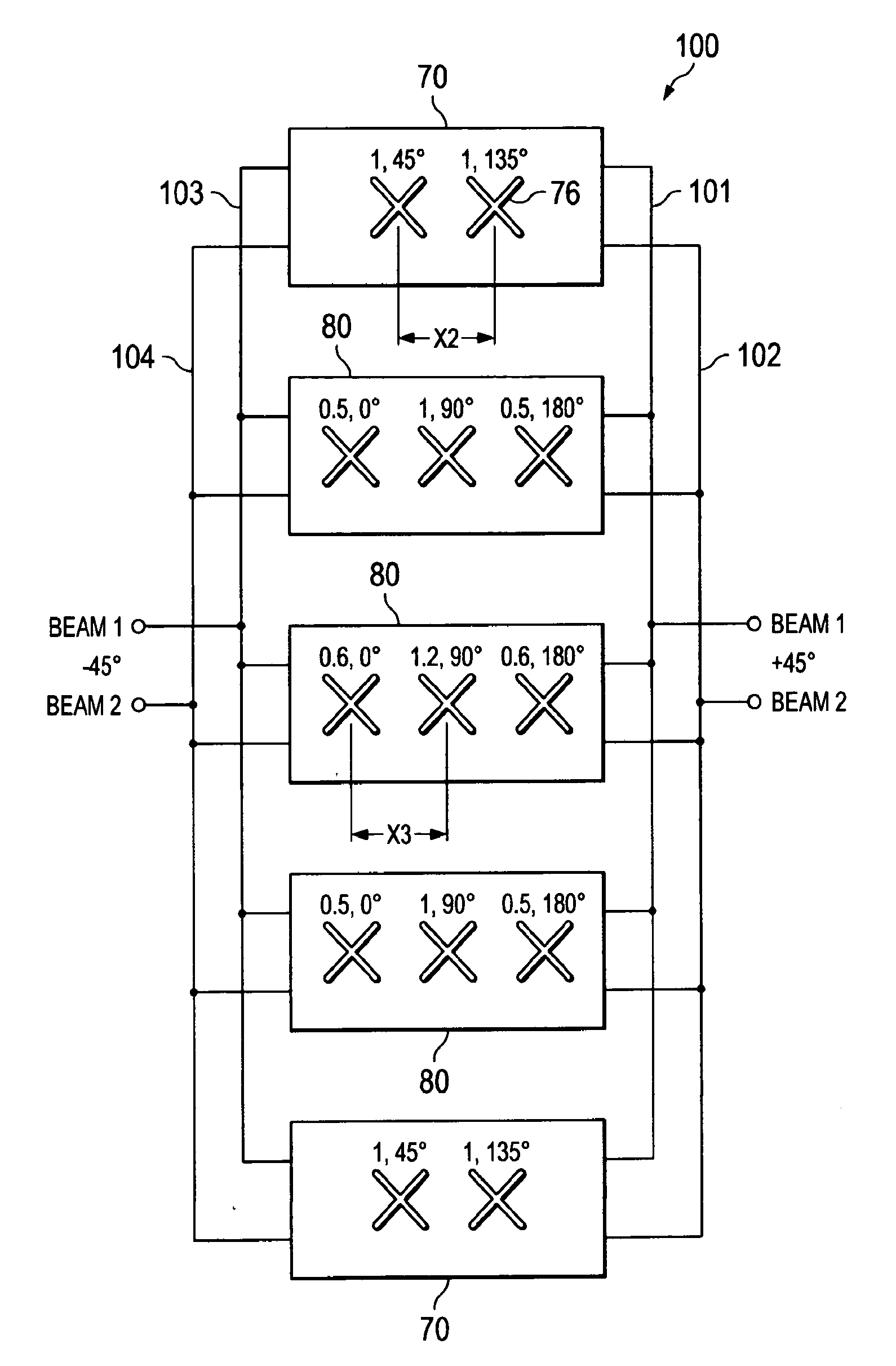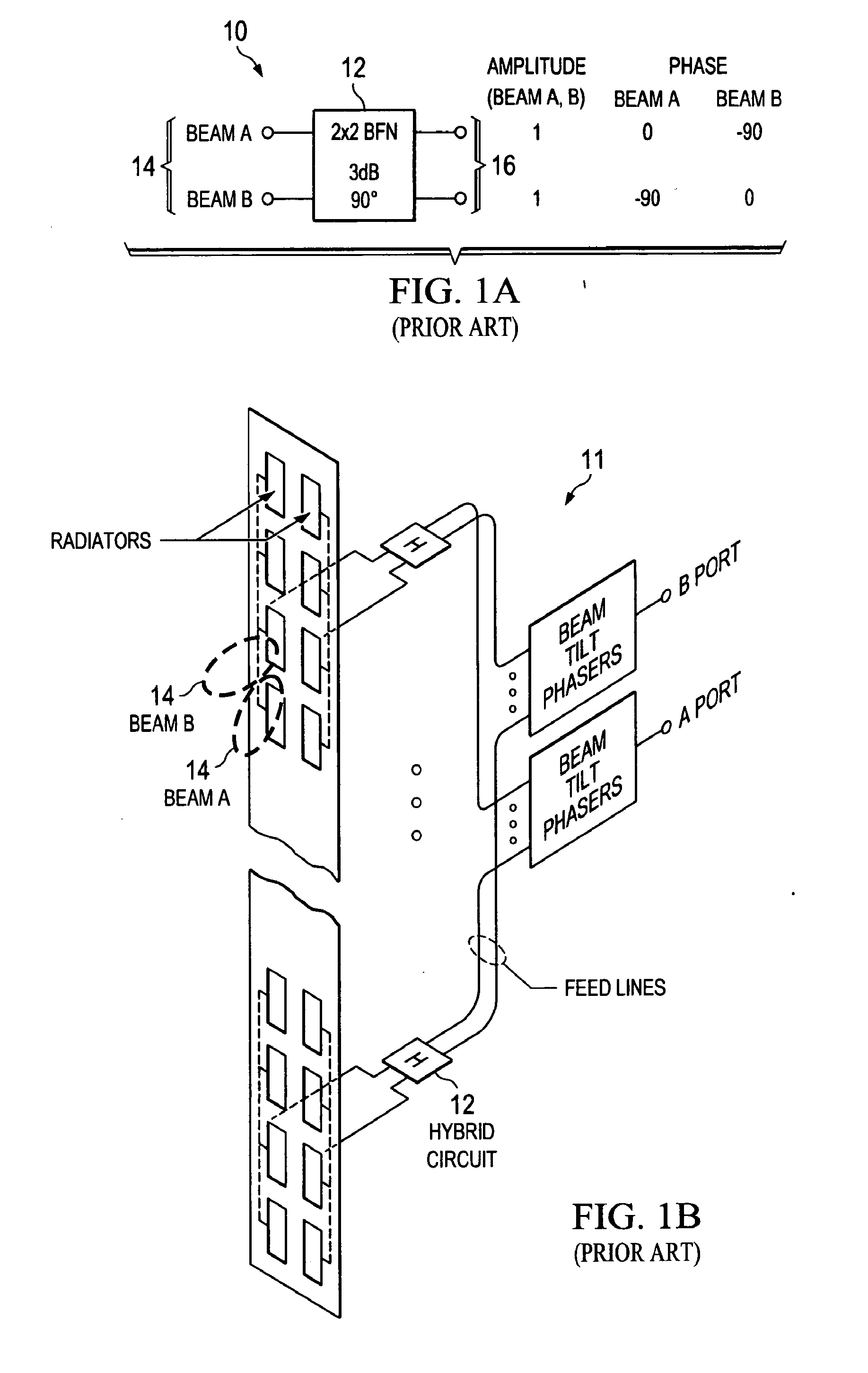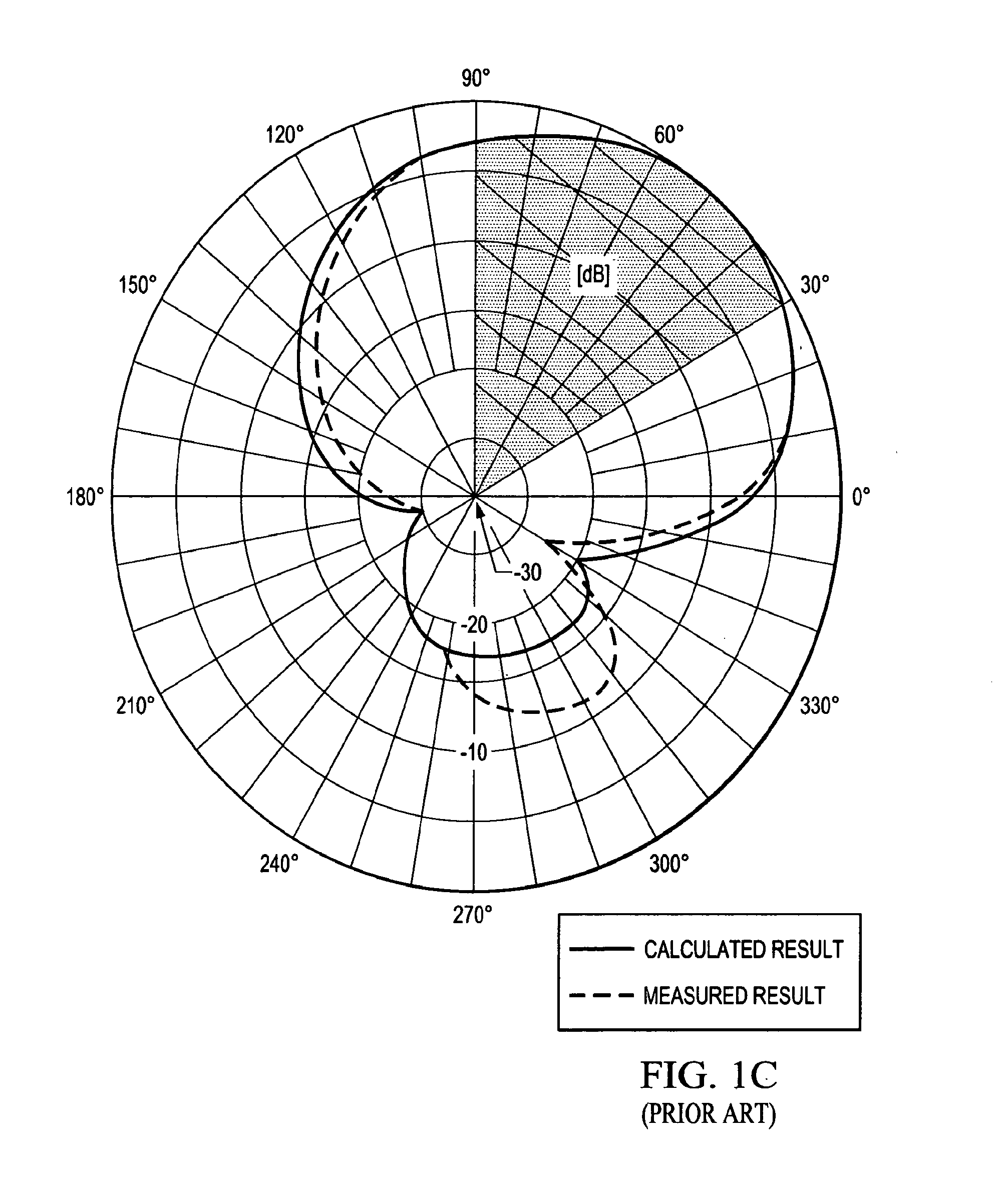Dual-Beam Sector Antenna and Array
- Summary
- Abstract
- Description
- Claims
- Application Information
AI Technical Summary
Benefits of technology
Problems solved by technology
Method used
Image
Examples
Embodiment Construction
[0027]Referring now to FIG. 2A, there is shown one preferred embodiment comprising a bidirectional 2×3 BFN at 20 configured to form 2 beams with 3 columns of radiators, where the two beams are formed at signal ports 24. A 90° hybrid coupler 22 is provided, and may or may not be a 3 dB coupler. Advantageously, by variation of the splitting coefficient of the 90° hybrid coupler 22, different amplitude distributions of the beams can be obtained for radiator coupling ports 26: from uniform (1-1-1) to heavy tapered (0.4-1-0.4). With equal splitting (3 dB coupler) 0.7-1-0.7 amplitudes are provided. So, the 2×3 BFN 20 offers a degree of design flexibility, allowing the creation of different beam shapes and sidelobe levels. The 90° hybrid coupler 22 may be a branch line coupler, Lange coupler, or coupled line coupler. The wide band solution for a 180° equal splitter 28 can be a Wilkinson divider with a 180° Shiffman phase shifter. However, other dividers can be used if desired, such as a ra...
PUM
 Login to View More
Login to View More Abstract
Description
Claims
Application Information
 Login to View More
Login to View More - R&D
- Intellectual Property
- Life Sciences
- Materials
- Tech Scout
- Unparalleled Data Quality
- Higher Quality Content
- 60% Fewer Hallucinations
Browse by: Latest US Patents, China's latest patents, Technical Efficacy Thesaurus, Application Domain, Technology Topic, Popular Technical Reports.
© 2025 PatSnap. All rights reserved.Legal|Privacy policy|Modern Slavery Act Transparency Statement|Sitemap|About US| Contact US: help@patsnap.com



